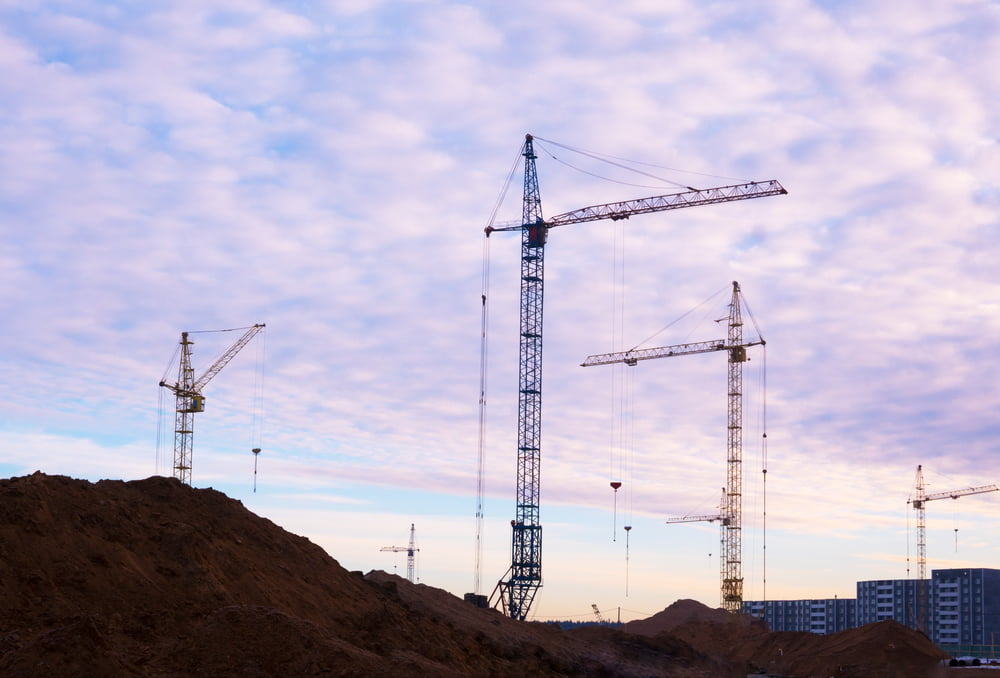As Australian regulators work to reduce carbon emissions, the nation’s infrastructure projects have been identified as major contributors to emissions and climate change.
According to the Clean Energy Finance Corporation, infrastructure accounts for 70% of Australia’s carbon emissions. Of the total amount of carbon emissions created by our nation’s infrastructure, it’s estimated 39% of these emissions are generated during the construction phase.
“This is huge,” says Max Girault, Inauro’s Chief Commercial Officer. “So anything that people can do to reduce this has a big impact on Australia’s overall emissions and Australia’s targets.”
Understanding how to reduce carbon emissions in construction is crucial for all levels of the sector. We explore how construction companies can use telematic measurement and reporting to help meet their sustainability goals.
The government response to construction emissions
Building materials significantly contribute to carbon emissions throughout their lifecycle. Manufacturing materials like cement, steel and aluminium is energy-intensive, producing substantial greenhouse gases. Transporting these materials to sites further increases carbon output, and on-site use of construction machinery, which often relies on fossil fuels, continues to emit carbon.
In 2021, global emissions from cement production amounted to approximately 2.6 billion metric tonnes of CO2. To put this in perspective, if the cement industry were a country, it would rank as the fourth-largest emitter globally, following China, the US and India.
In Australia, cement production released 4.7 million tonnes of CO2 during 2020-2021, with around 60% of these emissions being process related.
Australia produces nearly half of the world’s iron ore, but the process of converting iron ore into steel is highly energy-intensive and is responsible for 7% of global greenhouse gas emissions.
Government regulations and policies
State governments are actively implementing regulations to reduce carbon emissions in the construction sector.
The NSW Government, guided by the State Infrastructure Strategy, has introduced the Decarbonising Infrastructure Delivery Policy and Technical Guidance for Embodied Carbon Measurement to ensure carbon emissions generated during construction are measured consistently across all project stages.
The Victoria Government is updating policies and guidelines to incorporate carbon emissions into infrastructure decision-making.
At the national level, Australia aims to reduce greenhouse gas emissions by 43% by 2030 and achieve net zero by 2050. The Transport and Infrastructure Net Zero Roadmap and Action Plan will provide a clear strategy to reduce emissions across the transport and infrastructure sectors.
“These policies are becoming a new metric against which projects are going to be evaluated at the tender phase and completion,” says Max.


Vehicle idling time can be a major contributor to a project’s emissions, and it’s a simple issue to remedy
How to reduce carbon emissions on a construction site
During manufacturing, transport and the build phase, there are many ways the construction industry can contribute to a lowering of emissions and move towards low-carbon construction.
What is low-carbon construction?
This refers to building practices designed to minimise the carbon footprint of construction projects.
Learning how to reduce the carbon footprint in construction requires a comprehensive approach and involves addressing the entire lifecycle of materials and energy usage. When considering how the construction industry can reduce carbon emissions, key strategies include:
- Better utilising green building materials such as reclaimed wood, bamboo and recycled steel
- Investing in innovations like carbon-capturing concrete and low-emission insulation materials
- Upgrading to energy-efficient machinery and vehicles to reduce fuel consumption.
- integrating renewable energy sources, such as solar panels and wind turbines, into construction sites
- Implementing robust recycling programs for waste materials and reusing on-site materials
- Taking advantage of appropriate waste disposal methods to ensure waste is managed in an environmentally friendly manner
The role of telemetry in lowering carbon emissions in construction
Telematics, data management and IoT are powerful tools construction companies can implement to reduce carbon emissions while improving the overall efficiency of construction projects.
Here are just a few benefits of telematics in construction.
- Fuel monitoring: By tracking fuel usage, companies can identify inefficiencies and reduce unnecessary consumption, directly lowering emissions.
- Asset efficiency: Monitoring machinery performance helps maintain optimal efficiency and reduce downtime, lowering emissions.
- Maintenance management: Predictive maintenance based on telematics data ensures equipment is running efficiently, preventing excess emissions from machinery.
Accurate emissions reporting at each project stage is now crucial for meeting regulatory requirements and sustainability goals. Knowing how to reduce embodied carbon in construction can significantly lower a project’s overall carbon footprint.
“You can’t impact anything you don’t monitor, and on a project or on a fleet of vehicles, the less fuel you use, the better return on investments you get,” says Max. “Monitoring changes behaviour. For example, on a construction site, you might have a lot of idling vehicles waiting. The data can show you that. When you change behaviour so those assets are turned off when waiting, you can have a big impact.”
By using telematics to monitor carbon emissions, construction companies can improve efficiency and profits while complying with government regulations.
“A prime example is our work with a tier-one contractor in Australia,” says Max. “We help them optimise advanced telematics solutions, so the contractor is in a better position to comply with new emissions regulations in Victoria, improving efficiency and safety while meeting stringent carbon emission standards.”
Achieve compliance with Inauro
As regulations increasingly require the construction sector to decrease carbon emissions, stakeholders must better understand how to reduce carbon emissions in construction and take proactive steps to ensure compliance.
Inauro is a leader in making telemetry solutions work to reduce emissions in the construction industry. With our services, construction companies can meet these standards while improving efficiency and profitability.
Learn more about Inauro’s emission measuring and reporting solutions here.


